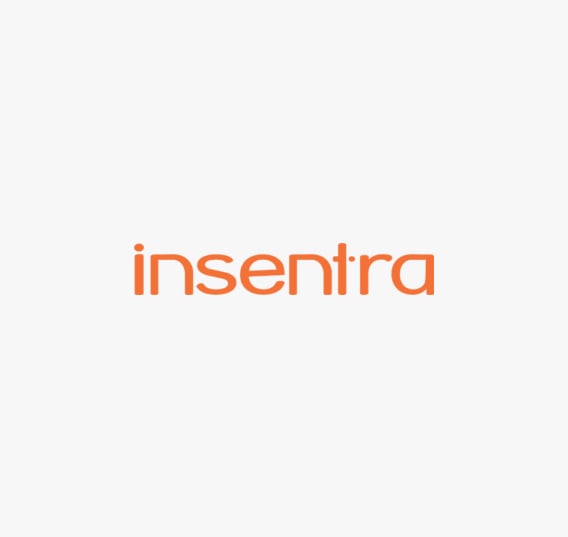Introduction
Being armed with useful background information when starting a new project with a client is quite important to how successful the initial phase of the engagement begins. Just knowing their business drivers for wanting to undertake a particular project can help tailor the way you will manage the delivery and key stakeholders for the project. Most of the time, this information is shared with you by your Sales team as part of the “Sales to Delivery” process. However, wouldn’t it be even more beneficial for the overall success of the project and the continuation of those relationships you form with your client once your project ends if you had another source of more valuable information at your disposal?
Your organization is probably filled with an abundance of talent and experience, as is the case at Insentra. They all come from different backgrounds with varying levels of skills across many technologies and processes. Without an effective method of capturing vital information and project experiences from these talented crew members, you are effectively starting with a blank page every time you begin a new project. It’s like setting sail on your boat without first checking the weather conditions and tide times and hoping it all will be alright.
Wouldn’t it be nice to go into a new project primed with key lessons previously captured by others in your organization? Lessons which relate to the solution you are implementing, the client you are delivering the solution for, or even the methodology you are delivering to is vital to help you steer your boat on the correct course in conditions you have planned for. In this blog, I will share some useful tips on how you can be part of the ‘learner’ generation to help you, as well as your entire business, make better decisions in future projects and have your clients wanting to continue using your services again and again.
So, what are Lessons Learned?
Lessons essentially come in two distinct flavours – what went well and what could have gone better. Lessons help you decide whether to stop, start or continue a certain behavior or process. They provide you with the opportunity to use the knowledge gained in a project and apply corrective actions as required to avoid making the same mistakes going forward. Equally as important are the positive lessons gleaned from a project as repeating processes which have proven to be effective feed the habit of doing things the right way within your organization.
It takes the combination of people, processes and systems to effectively convert the Lessons Learned data captured from separate projects into useful information and then transform this information into knowledge the business can take advantage of. Essentially, Lessons Learned is a business function and not just a process used for a project.
When should I be capturing lessons?
Capturing lessons at the end of a project before moving on to your next one is very important. This process is followed for every project Insentra manage via a Post Project Review (PPR).
However, it is also a good practice to conduct lessons learned meetings progressively throughout a project, typically at the end of each phase whilst they are still fresh in the minds of the team. Taking the time throughout the project to capture lessons helps propel those positive lessons forward into the next phase of the project. It also enables the team to make corrections to processes which have not gone as planned. Making adjustments (course corrections) along the way ensures your project is being delivered as effectively as possible and is a great enabler for allowing your team to complete their tasks with efficiency. Celebrate the successes along the journey of a project and take action for things which could be done a better way.
What to do with your Lessons
Capturing Lessons in your projects is a vital process for your team and the entire organization. Capturing lessons without sharing the learnings with the wider business is like the government conducting surveys for its citizens and then just filing away the results without sharing them with the public.
Lessons are only valuable if others can learn from them and they need to be applied after being captured.
The Lessons process consists of two main parts: capturing and applying.
Capturing Lessons
Capturing includes the identification and documentation of lessons. Lessons which could be valuable for the remainder of your project and future projects are documented and shared with the organization.
Applying Lessons
Applying is where we analyze, assign actions, store and retrieve lessons. Captured lessons are analyzed and categorized with recommended actions, stored in the lessons repository and then made accessible to others to retrieve as and when required.
Every project has lessons, both good and bad, which are very beneficial for your business. However, the benefits are only realised if the entire crew have access to these lessons. Lessons need to be properly categorized and stored in an accessible repository which makes searching for this valuable information simple. I mean, what good are these ‘nuggets’ if they are only known to the project team and the rest of your colleagues can’t benefit from them? Advertising the lessons database across the business and employing a simple user-friendly process to access them will help make learning part of the company’s DNA and create successful habits. Capitalizing on the value of knowledge to help make better decisions in future projects will go a long way to make your business stand out from competitors.
By the use of defined categories and sub-categories applied to each lesson, the knowledge seekers in your organization can refine their searches to lessons which are specific to their requirements. This makes the process of looking for only the relevant lessons more efficient. Isn’t efficiency what we all strive for?
Examples of categories could be scope, finance, efficiency, delivery, quality, documentation, training, technical and people. When defining your categories, carefully consider what would be helpful for those seeking the knowledge to retrieve meaningful lessons information quickly.
Finally, a key part of the lessons learned process is providing recommendations for those lessons where things could be done better. Recommendations are then reviewed by the business and actions are assigned to the relevant team with the capability to make any required changes. Without action, key lessons captured in one project where something could be done a better way will keep showing up in lessons captured in future projects, and without action, the lesson is not really learned at all. Undesirable outcomes will most likely keep repeating time and time again.
Conclusion
Make the time in each of your projects to reflect on the causes of successes or failures in your project and encourage your colleagues to adopt a ‘learner’ mindset. Learners are open to other people’s views and opinions and see learning as a journey, not a destination. They want to be part of the solution and seek better ways to deliver outcomes. A pivotal way to achieve this is by the Lessons Learned process and it is the responsibility of all project team members to keep striving for perfection. Ensuring positive lessons are continued and the mistakes are not repeated is all part of the journey of the learner.
Here ends the lesson and I hope you have learned something valuable.
I encourage you all to be learners in your organizations and I welcome any feedback or ideas you have to share on the topic of Lessons Learned.
If you’ve enjoyed what you’ve read here, I recommend the following blogs from Insentra’s project teams for more useful advice:










